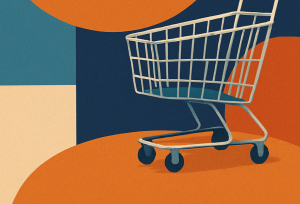
Share
The Balance of Growth and Loyalty in E-Commerce is the Hidden Key to Scaling Your Business
It may seem obvious at first that attracting new customers while retaining existing ones is essentially the end-goal of any marketing program. After all, anybody with the wherewithal to start a business knows they can’t expect to thrive and grow their business off one-and-done shoppers alone.
Customer loyalty has been a key component to marketing and advertising for centuries. Even the merchants on the streets in medieval times gave deals to the shoppers who repeatedly bought items from them (axes, torches, etc), knowing their business was more valuable than a passing stranger’s.
It makes sense.
They’re already familiar with your product, eager to give feedback or share concerns, have already proven to be receptive to your marketing efforts, are easier to up-sell, and can spread the news about how great your product or service is to their friends and family. They’re truly invaluable.
But it’s not just great to have loyal customers for your brand story or getting the word out around town; it also affects your bottom line.
For instance, let’s say there are two companies with the exact same product and marketing strategy. Imagine they’re both adding new customers at a rate of 20 percent per year. However, one company retains 90 percent of their customers while the other only retains 80. What this means is that the first company will have a 10 percent growth of their customer base every year, while the other will have none. If you stretch this over seven years, the first company will have doubled its customer base, while the second one will not have grown by much.
And lucky for us in 2019, we have the tools at our disposal to optimize our strategies to achieve this loyalty-growth balance.
It was much more difficult to track consumer behavior prior to the digitalization of the modern shopping experience. But now, with the analytics available to merchants, we know how to figure out where shoppers are coming from and the browsing activity that led them to their decision to make their purchase.
Understanding the cost of new customers
The CAC (cost of acquisition) metric coupled with the customer lifetime value (the value of the average customer’s lifespan) can provide a somewhat reliable idea of the inherent value of each new customer.
It’s necessary to know how much acquiring a new customer costs. If it’s $10 to acquire a new customer and they only make one purchase, that could be thought of as more expensive than $10 for that same customer if they’d made a $25 purchase every month for 10 years.
A company like ours at Advertise Purple tracks all of this for you, however yes it is indeed possible to do this on one’s own as well. Whether or not their data is reliable is dependent on how much experience and wherewithal they demonstrate while running their business.
Understanding the cost of repeat customers
Similarly, it’s important to know how much value repeat customers are bringing to your company. A customer retention rate can be defined as the percentage of customers who, over some period of time, repurchase when compared to the same period before.
Understanding what your cost per acquisition per each of your marketing types (or channels) could narrow down how many former customers you are targeting, too. That’s because a portion of the cost of gaining a new customer is used on a returning customer (you are re-engaging and converting your existing customers that already know and enjoy your product).
Again, Advertise Purple works to make sure you aren’t only targeting old customers (cannibalizing sales in the process). We want to bring in those fresh customers while keeping old customers happy.
—
So, what does this all mean?
Most businesses spend too much of their time building the initial customer relationship, building up the brand, the product, and eventually the sale. They need to spend more of their energy focusing on the post-sale experience. In some cases, the consumer’s interest in the product fades. That’s the last thing your company wants.
Customers will take notice if you are open and honest with them, take initiative to care and be interested in them. If not, you may lose them to another company that has been more successful at wooing them away.
And so in the end, that’s the lesson. Don’t just look to cultivate new buyer-seller relationships. Look to maintain and take care of the ones who keep coming back, and your business will succeed.



